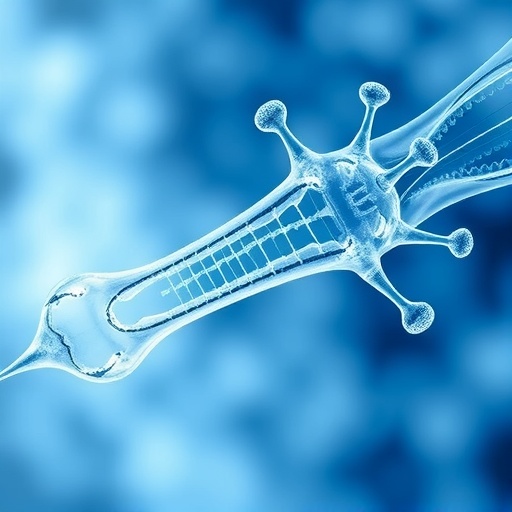The stimulator of interferon genes (STING) pathway has emerged as a focal point in the burgeoning field of cancer immunotherapy, reflecting an increasing interest in harnessing the body’s own immune responses to combat malignancies. STING agonists have demonstrated significant efficacy in preclinical models, generating optimism within the scientific community regarding their potential clinical applications. However, despite these promising results, the transition from laboratory success to clinical applicability remains fraught with challenges, particularly concerning the intricate dynamics of dose–toxicity and dose–efficacy relationships.
It is crucial to recognize that many of the advancements in understanding the STING pathway have predominantly been derived from murine models. This reliance on rodent experimental systems poses significant limitations when attempting to extrapolate findings to humans. Differences in pharmacodynamics, as well as variances in immune system architecture and responses, introduce complexities that can skew results and potentially lead to misleading conclusions regarding the safety and efficacy of STING therapies in human populations. Therefore, it becomes imperative to explore these relationships within more relevant biological contexts beyond murine systems to glean insights applicable to human treatment scenarios.
One of the pivotal aspects when considering STING agonists is determining the ideal dosage and delivery kinetics necessary to elicit a robust therapeutic response while avoiding the pitfalls of overt or chronic inflammation. The management of inflammatory responses is particularly crucial given the delicate balance that must be maintained in immune system activation. Inappropriately high doses can lead to severe immune-related adverse events, effectively countering the therapeutic benefits of STING stimulation. Conversely, suboptimal dosing may fail to activate the STING pathway sufficiently, thereby limiting its potential efficacy. This intricate balancing act necessitates a thorough investigation into the pharmacokinetics of these agonists to optimize their therapeutic window.
Compounding the challenges faced in clinical application are the inherent delivery barriers associated with STING agonists. Their short circulatory half-life, coupled with inadequate internalization by target cells, presents significant hurdles that must be addressed. Moreover, non-specific tissue uptake further complicates treatment regimens, leading to systemic side effects that are often detrimental to patient outcomes. These challenges underline the importance of innovative biomaterial-based delivery systems, which have the potential to surmount these barriers and enhance the overall effectiveness of STING agonist therapies.
Biomaterials serve as a transformative approach to delivering STING agonists, providing a versatile platform for improving bioavailability and targeting the immune system more effectively. By encapsulating STING agonists within biomaterials, researchers can fine-tune the release profiles of these drugs, allowing for sustained immune activation over extended periods. Such sustained delivery mechanisms can significantly improve the efficacy of STING therapies while simultaneously minimizing the risk of dose-related toxicity, ultimately leading to a more favorable therapeutic landscape for patients.
Furthermore, biomaterials can facilitate intra-tumoral delivery, addressing the pressing issue of immunosuppressive tumor microenvironments, which often thwart the effectiveness of immunotherapy. By using biomaterials that can release STING agonists directly within tumor sites, researchers can circumvent systemic side effects and enhance local immune responses more effectively. This localized approach allows for higher concentrations of the agent at the tumor site while reducing exposure to surrounding healthy tissues, thus mitigating potential adverse effects often associated with systemic treatments.
The coupling of biomaterials with combinatorial therapies opens new frontiers in enhancing the efficacy of STING agonist treatments. The ability to integrate multiple therapeutic modalities—such as immune checkpoint inhibitors or other forms of cancer immunotherapy—can synergistically improve anti-tumor responses. By using biomaterials strategically, researchers can tailor combination regimens that optimize interactions between the STING pathway and other immune regulatory mechanisms, which has the potential to overcome tumor-induced immune suppression effectively.
Additionally, biomaterial systems are valuable not only for their therapeutic potential but also for their ability to provide insights into the biological mechanisms at play during STING-based therapies. Investigating how different formulations interact with various immune cell types can yield critical data that shapes future research endeavors. Understanding the mechanisms underlying STING agonist efficacy helps delineate how they modulate immune responses, ultimately guiding the design of next-generation therapies.
Long-term effects of STING-based therapies are another essential consideration in the evaluation of their safety and efficacy. Biomaterial systems can be engineered to monitor immune responses over extended periods, shedding light on how prolonged exposure to STING agonists influences immune system dynamics. Through this lens, researchers can assess the sustainability of anti-tumor responses and identify potential late-onset immune-related side effects that may arise after treatment cessation.
The landscape of cancer treatment is evolving, with the STING pathway emerging as a critical element in the quest for more effective immunotherapeutic strategies. The integration of biomaterials into the delivery of STING agonists not only offers the promise of enhanced therapeutic benefits but also addresses the significant hurdles associated with traditional administration methods. Innovative biomaterial designs have the potential to change the paradigm of STING therapies, paving the way for more effective and safer cancer treatment protocols.
As the research community continues to dissect the nuances of the STING pathway and refine methodical approaches to drug delivery, patients may soon benefit from therapies that leverage the body’s immune defenses against cancer more effectively than ever before. The collaboration between bioengineers and immunologists will be essential in this endeavor, fueling a new wave of research aimed at unlocking the full potential of STING agonists in clinical settings.
In conclusion, while the path forward for STING agonists in cancer therapy may be riddled with challenges, the innovative application of biomaterial strategies presents a beacon of hope for overcoming these obstacles. By embracing interdisciplinary approaches that meld cutting-edge materials science with immunotherapeutic principles, the future of cancer treatment could witness remarkable advancements that significantly improve patient outcomes and redefine the standards of care in oncology.
Subject of Research: STING Agonist Therapy in Cancer Treatment
Article Title: Bioengineering strategies to optimize STING agonist therapy.
Article References:
Dosta, P., Cryer, A.M., Prado, M. et al. Bioengineering strategies to optimize STING agonist therapy.
Nat Rev Bioeng 3, 660–680 (2025). https://doi.org/10.1038/s44222-025-00337-y
Image Credits: AI Generated
DOI: 10.1038/s44222-025-00337-y
Keywords: STING pathway, cancer immunotherapy, STING agonists, drug delivery, biomaterials, combinatorial therapies, immune response, tumor microenvironment.
Tags: bioengineering techniques in medicinecancer immunotherapy advancementsclinical applicability of STING therapiesdose-toxicity relationships in STING therapyenhancing immune response against malignancieshuman pharmacodynamics in immunotherapyimmune system architecture variationsmurine models limitations in researchpreclinical models of cancer treatmentSTING agonist therapytherapeutic delivery kineticstranslating research findings to clinical settings





